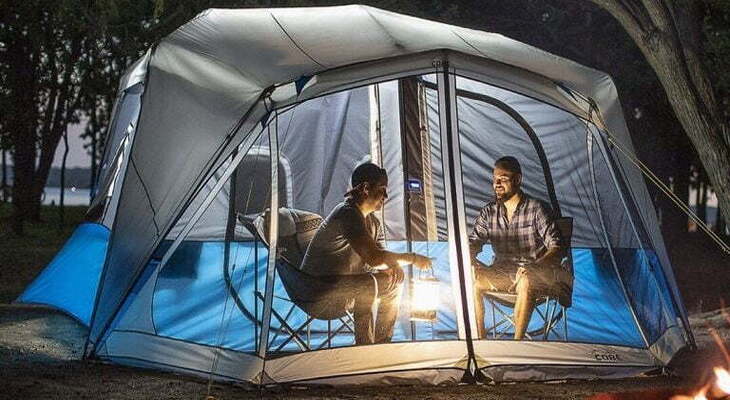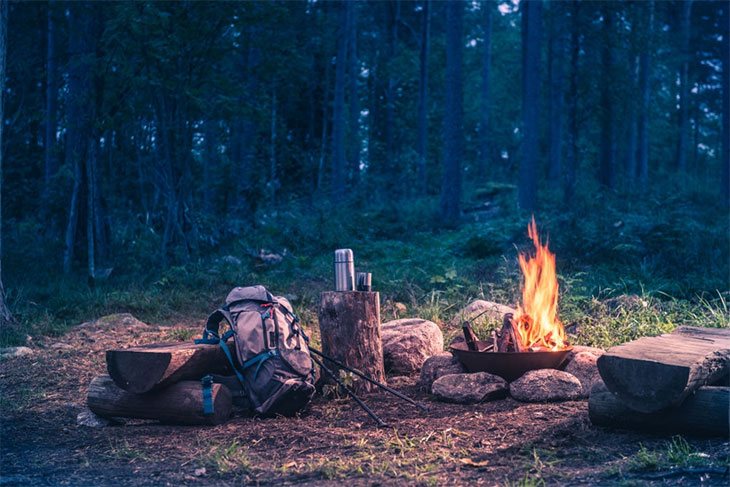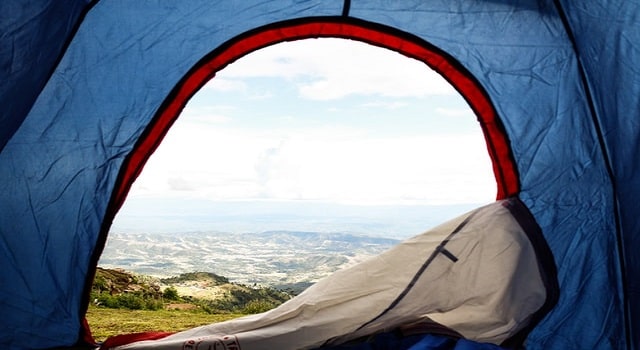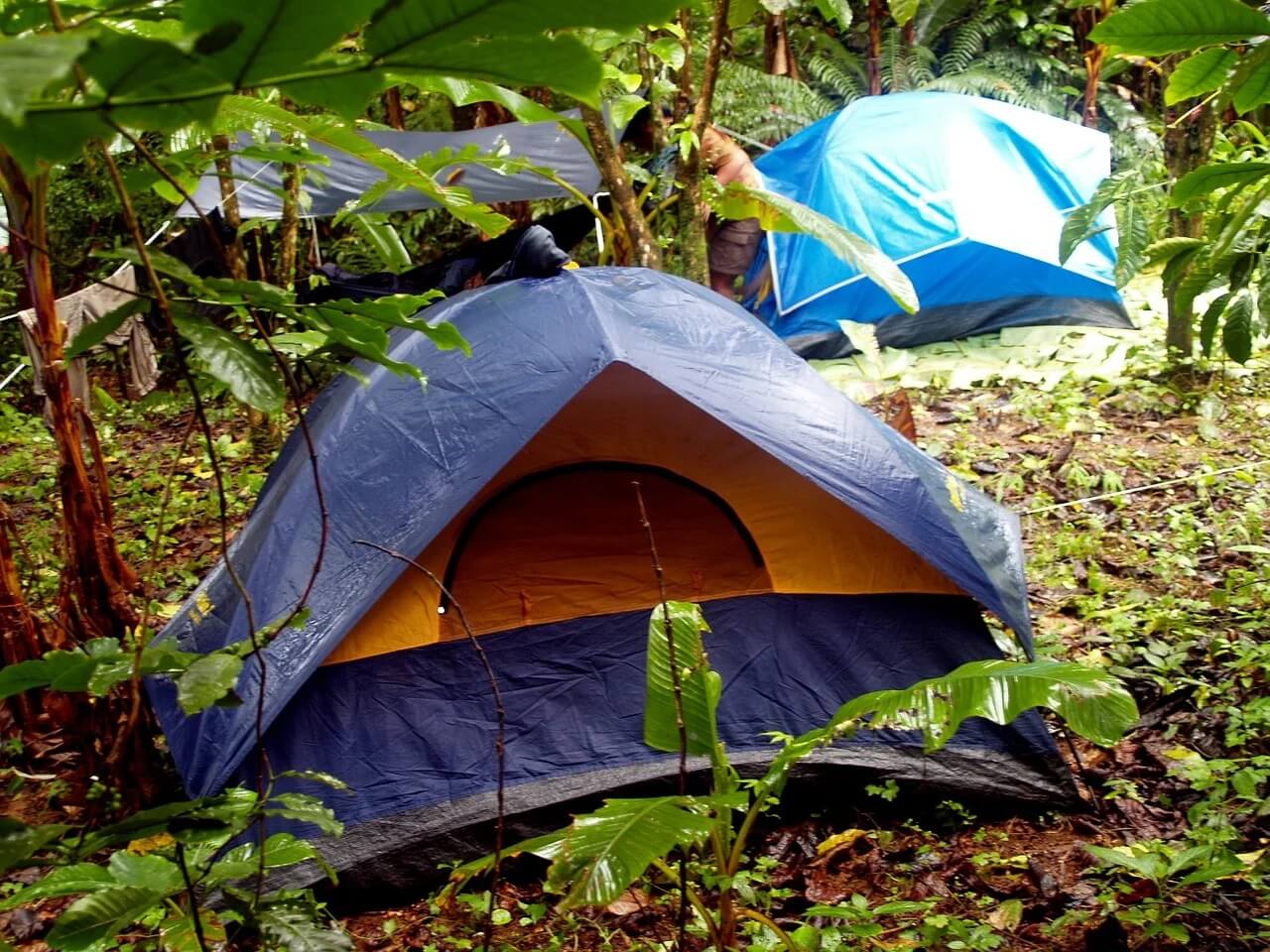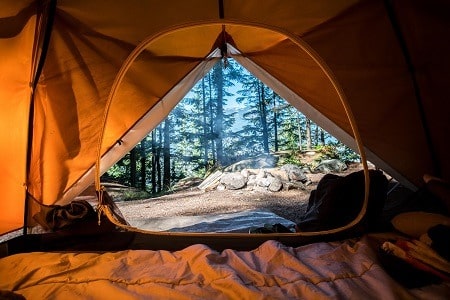
How to Camp Without a Sleeping Bag While going camping there are certain items in the camping gear that the campers think are very important to take along, like a tent, a sleeping bag, and any light source.
But there are many professional campers, who have been going on such excursions for long, and know quite well how to camp without a sleeping bag.
They opt to camp without their sleeping bags for various reasons, like light traveling and simplicity. There are plenty of other items that can replace sleeping bags especially if you are traveling by car or camping in the warm climate.
We will discuss different ultra-light sleeping bag alternatives so you can enjoy your camping even in the cold weather. Quilts, clothing, blankets, or even a fire can all protect you and give you enough heat to keep you warm.
While camping with no sleeping bag back-packing there are a number of options from where we can choose, to keep us warm and comfortable during the night. Such as:
Contents
9 Easy Tips How to camp without a sleeping bag:
- Woollen or Synthetic Blanket.
- Sleeping Bag Liners.
- Top Quilts.
- The Bivy Sack.
- Space Blankets.
- Use a Hot Water Bottle.
- Warm Clothing.
- Keeping Hot Rocks From The Campfire.
- Ground Insulation.
1. Woollen or Synthetic Blanket:
Camping with blankets instead of a sleeping bag was being practiced for hundreds of years when people stayed out overnight for hunting or traveling purposes.
The blanket along with the warmth from the fire can help you brave the coldest weather. Wool is the material that is more suitable for camping as it’s warm, durable, dries up quickly, and is not flammable.
With its wind-resistance qualities, a woolen blanket can withstand even the strongest of winds.
2. Sleeping Bag Liners:
A sleeping bag liner is a fleecy bag used inside the sleeping bag to make it warmer, weather-resistant, and adds to its comfort.
They are rated according to the level of warmth they provide and consequently raise the temperature rating of the sleeping bag.
These sleeping bag liners are usually preferred by the campers as they are small in size and lightweight.
3. Top Quilts:
Designed like the top half of a sleeping bag the top quilt comes with two options. Either they come with a sewn-in foot box or they have Velcro or snaps to close it at the bottom.
With your sleeping pad warming, you from underneath a quilt can be a good option to avoid the heavy sleeping bag.
Top quilts are also highly recommended for those campers who are fond of hammock camping as they are far more user-friendly than sleeping bags.
The only downside is that as quilts do not have a hood so you have to use some headgear to keep them warm.
4. The Bivy Sack:
Bivy Sacks are usually used by climbers or those backpackers who want to keep their gear extra-light. These sacks are a sort of a single-person shelter and make a great ultra-light sleeping bag alternative.
Bivy Sacks look like a tent for a single person and due to their water-resistant qualities, they can be used in different climates. The Bivy Sack is designed to block the rain and wind while its insulation will help you to keep in the body heat.
5. Space Blankets:
Space or Emergency Blankets are quite lightweight that can be used instead of sleeping bags.
Their biggest advantage seems to be their low price and their compact size which makes their packing very easy.
6. Use a Hot Water Bottle:
There is yet another very useful hack that can keep you warm for hours. So just before going to bed fill your water bottle with hot water.
When you lie down to sleep put the hot water bottle between your legs. The heat from the water bottle will touch the femoral artery in your legs, which in turn will keep your whole body warm.
If the heat is too much for your skin you can always wrap the bottle with a towel or some thick cloth. This wrapping will also keep the bottle warm for a longer period and you can benefit from it longer.
7. Warm Clothing:
Another great option of camping without a sleeping bag is by dressing heavily, in layers. Besides reducing the weight in your backpack these warm clothes will also keep you cozy at night.
Even in mild weather, packing an extra pair of jackets and trousers will help you stay warm at night.
If you pack some extra warm clothing, they will help you to keep warm and comfortable even when you decide to camp without a sleeping bag.
Even if you decide to sleep in a hammock or bivy sack this extra clothing will make a big difference in your comfort.
8. Keeping Hot Rocks From The Campfire:
Though a bit risky but if you really are careful then this is an amazing hack. You can take some heavy, dry rocks and put them in your campfire.
Then when it’s time to retire and you are going to bed, you can take out these really hot rocks. Roll these heated rocks in some old sacks or old towels you brought along.
Place these wrapped, hot rocks inside your tent, and make sure to zip up your tent and keep it tightly closed. The heat will radiate from the rocks and warm up the air thus making your tent comfortably warm.
9. Ground Insulation:
Another great hack of sleeping outside without a sleeping bag is how to insulate the ground where you are going to lay down. If we lay down directly on the cold ground, we will lose heat through conduction and feel cold.
Here your sleeping pads may come in handy but there are times when you don’t have one. Here natural materials, like dried boughs and leaves will give you enough insulation to keep you warm.
Using a garbage bag filled with dried leaves is a good idea and can help you in keeping warm.
Conclusion:
We hope that after going through this article you will get a fair idea of how to camp without a sleeping bag. Although these sleeping bags were thought to be an essential part of the camping gear now you know that there are many other options and different types of camp bedding.
However, you must know that whatever option you are using in place of your sleeping bag, should be appropriate for the conditions you are facing.
